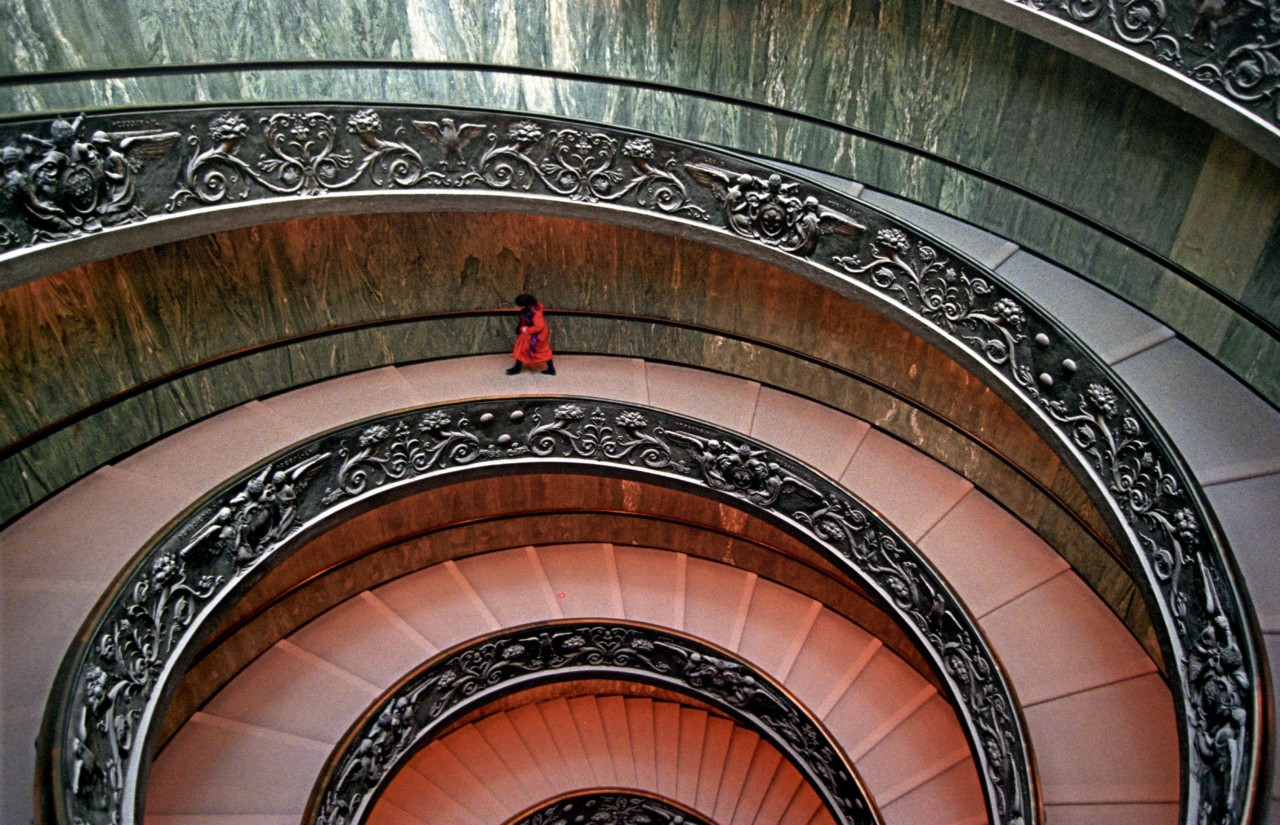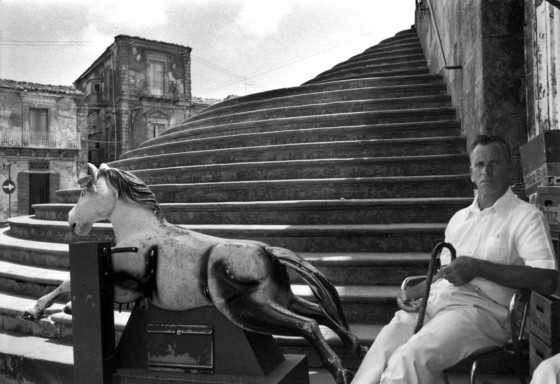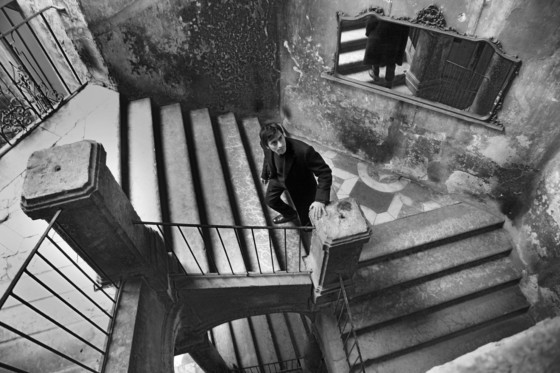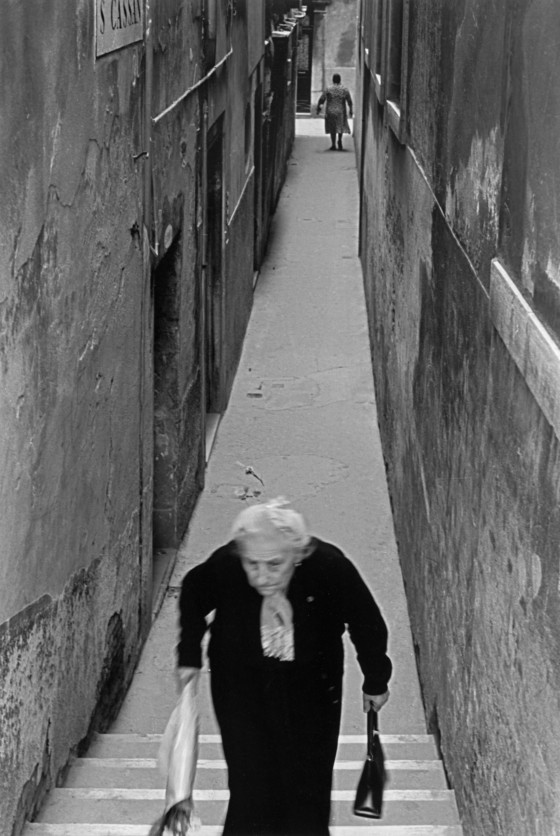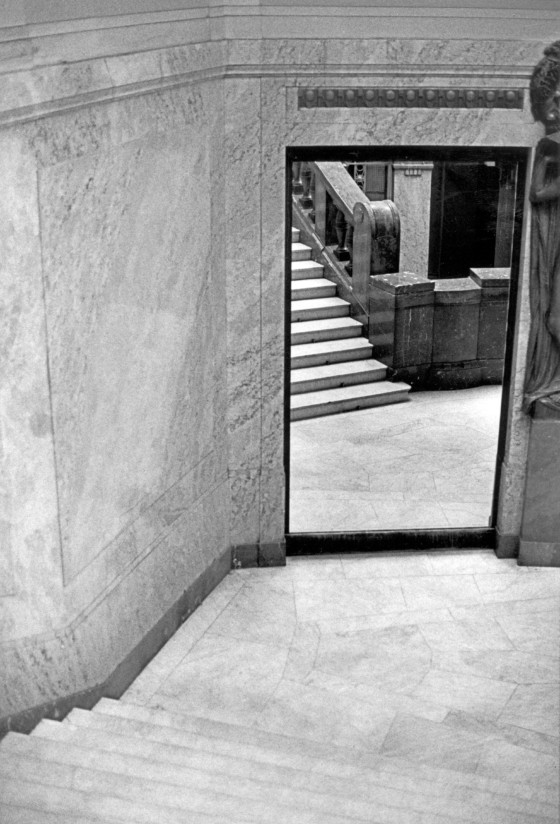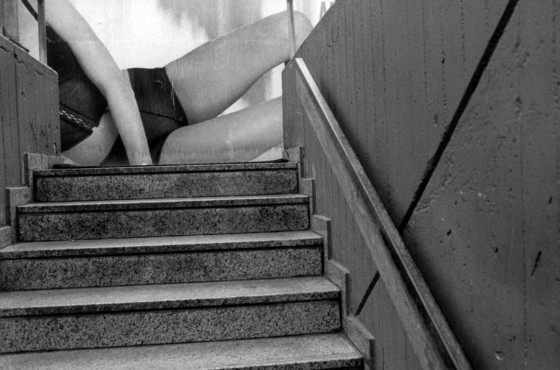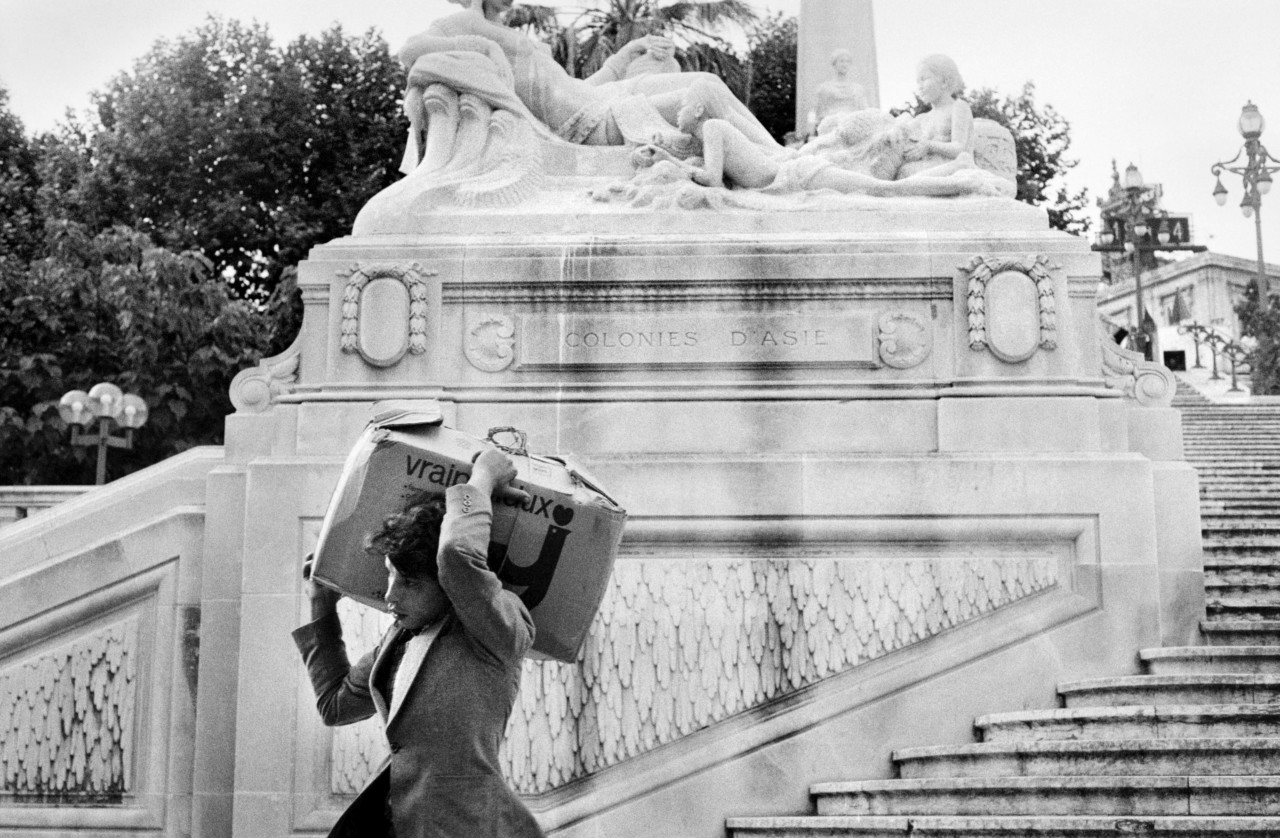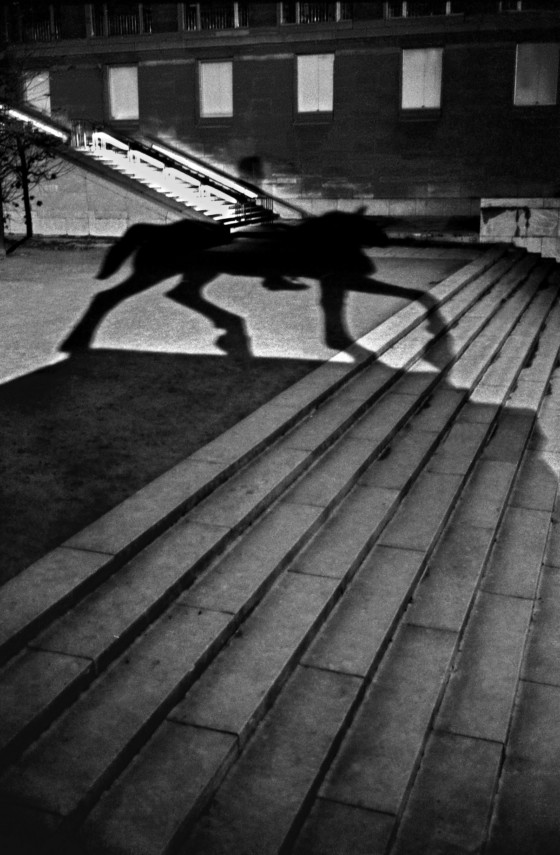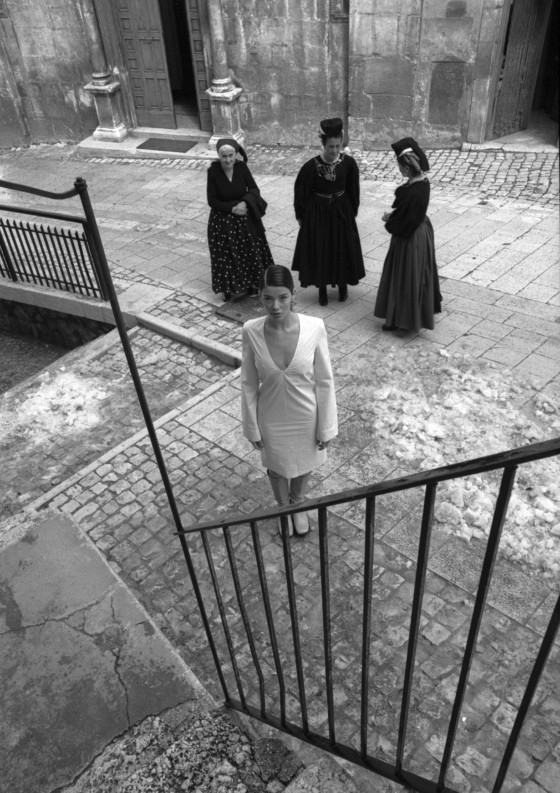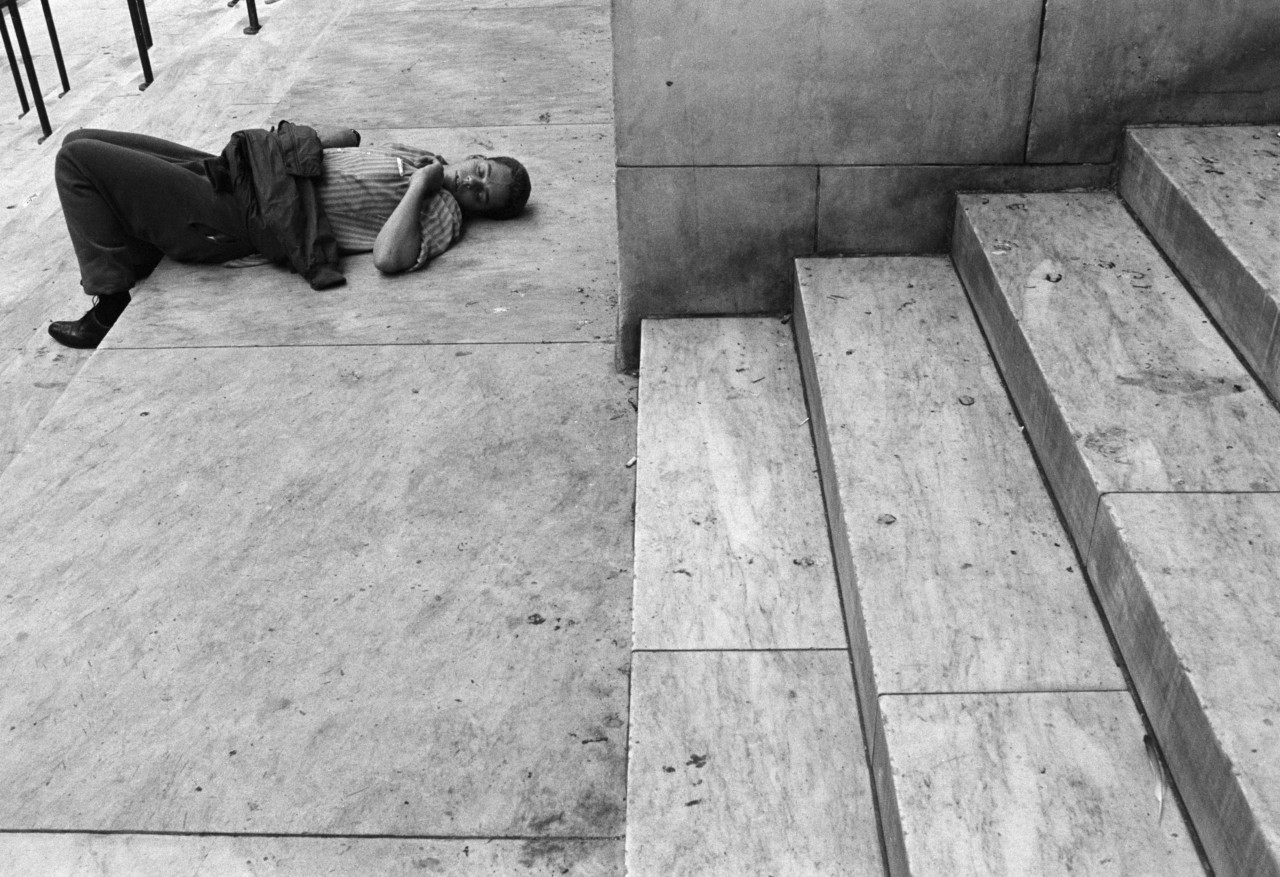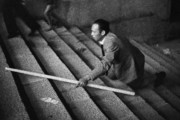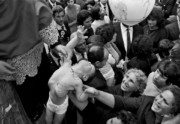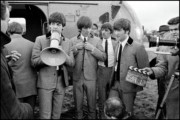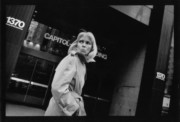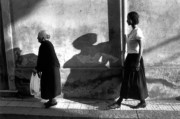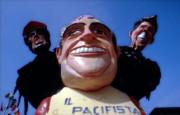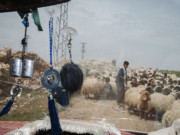The Mystery and The Drama of Ferdinando Scianna’s Staircases
Writer Darran Anderson investigates the meaning of an unexplored recurring motif
The photography of Ferdinando Scianna often captures decisive moments but it also reveals that the power of the frozen image is very often linked to implication and anticipation. His scenes take place within a wider unfolding process of time and movement, reminding us that we live and perceive the world at different speeds from that of a camera shutter. His ability to capture the essence of a scene is down to diligent exploration, “waiting for those instants of meaning and glimpses of form that on very rare occasions reveal the world and myself.”
It is also down to his skill at suggesting a before and after, “I’m much more interested in the view that explores the submerged part of the iceberg,” Scianna explained in an interview with the Times of Sicily.
"Waiting for those instants of meaning and glimpses of form that on very rare occasions reveal the world and myself
"
- Ferdinando Scianna
We see this enigmatic questioning quality in Scianna’s shots of staircases. Where do the steps lead? Where has this person come from? This lends a mystery to his images but also an unresolved subconscious tension as we see in the kissing image from Coney Island in 1985. The steps descend to a subway exit but equally someone, anyone, might emerge suddenly from them, lending the image a furtive voyeuristic quality, alongside the tenderness.
" They can become vantage points, places of aesthetic wonder or even everyday surrealism"
-
Stairs are not just transitory passageways. They connect not just one place to another but one level to another and so can suggest power dynamics. They’ve been forbidden places and even feared ones (the Gemonian Stairs execution site in Ancient Rome for example). Often power is displayed in a ceremonial performative way with royalty, Hollywood stars or clergy descending on high; the latter of which we see in Scianna’s religious photography. In his New York advertising shot from 2002, we face the human form replicated on a disconcerting scale and perspective; suggestive of the dehumanized supposed-intimacies of the corporate age.
In contrast, the pilgrim crawling up the steps towards Santa Rosalia’s sanctuary in Scianna’s 1963 image, in gratitude or to seek divine assistance, is wilfully submissive. Likewise, those genuflecting at Lourdes are kneeling to a higher celestial presence, unseen by the camera. In Marseilles, 1978, Scianna frames an immigrant toiling while stone gods luxuriate in the background, impervious to prayers or passers-by. And yet we see a tendency in Scianna’s photographs for people to casually subvert expectations. Stairs become places to rest, congregate jovially and anarchically or play. They can become vantage points, places of aesthetic wonder or even everyday surrealism.
"Stairs are not just transitory passageways. They connect not just one place to another but one level to another and so can suggest power dynamics.
"
- Darran Anderson
At the heart of Scianna’s work is a profound sense of empathy. However strange our ceremonies, you seek to relate to the people in his images. The settings seem almost a collective stage for the dramas of their lives, and ours. “You shall find out how salt is the taste of another’s bread” Dante wrote in The Divine Comedy “and how hard is the way up and down another’s stairs.” Or indeed how sweet it might fleetingly be, as we pass from one place, and one moment, to the next.
Darran Anderson is the author of ‘Imaginary Cities’ (Influx Press/University of Chicago Press) and the forthcoming ‘Tidewrack’ (Vintage/FSG). He is currently writing ‘Rooms’. He lives in London.



